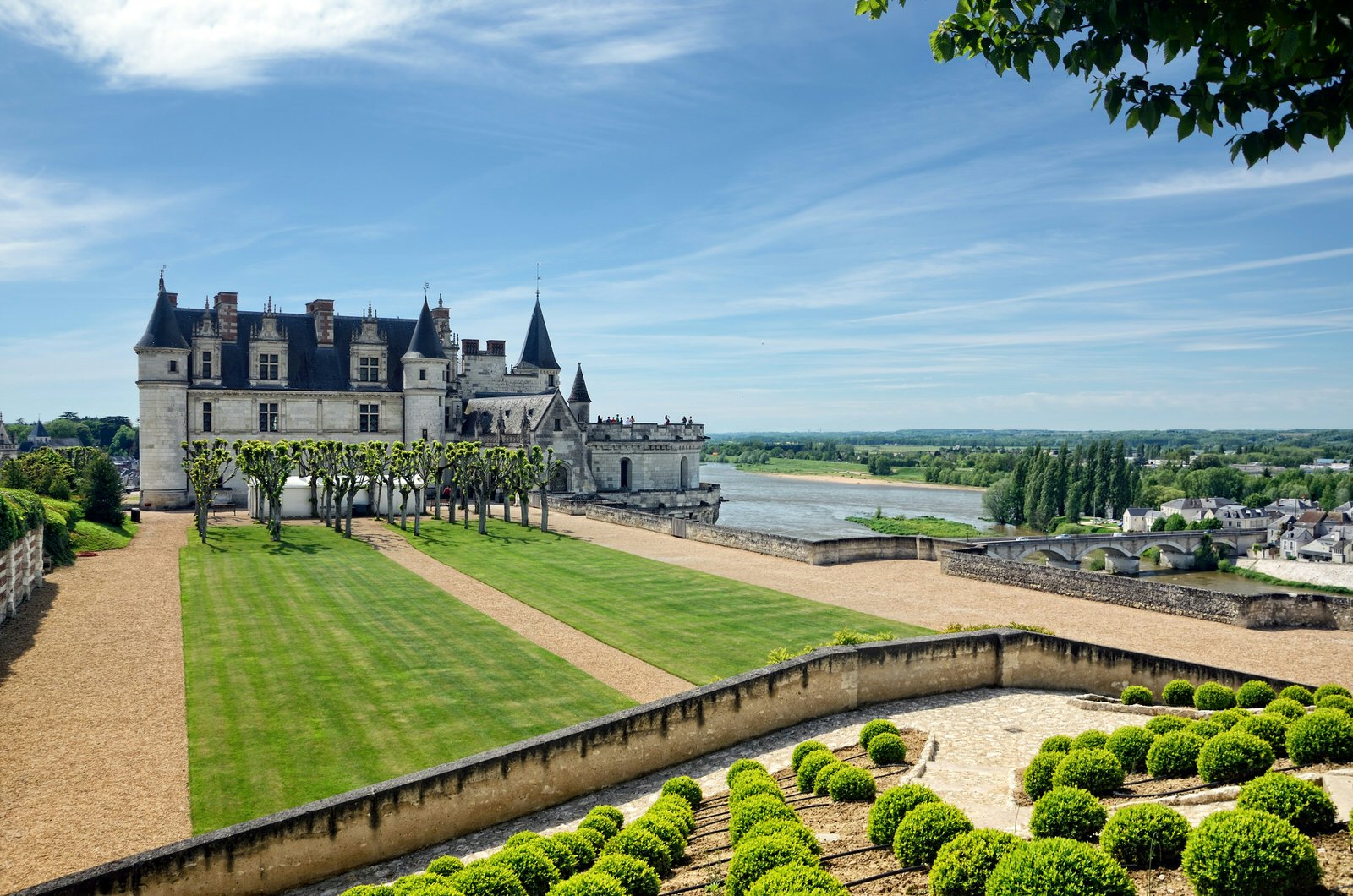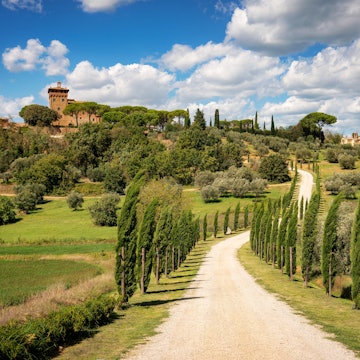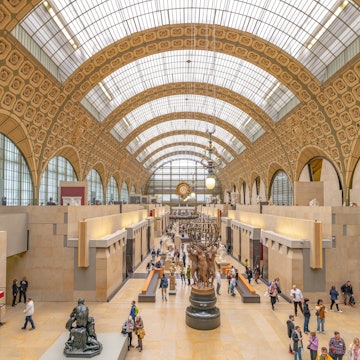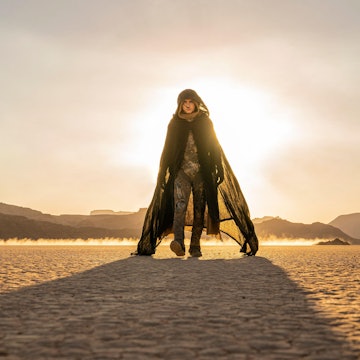

Anatomy art by Leonardo Da Vinci from 1492 on textured background.
Few geniuses have left as powerful an imprint on art, science and popular culture as Leonardo da Vinci (1452–1519). Paintings like the Mona Lisa and The Last Supper remain mysterious and compelling, spawning endless reproductions and parodies. The Renaissance Man’s staggering body of scientific work is still studied, with many of his theories only proven in modern times.
The 500th anniversary of Leonardo’s death has inspired dozens of exhibitions across Europe. Whether or not you plan a trip for an anniversary event, Leonardo’s native Italy has numerous attractions dedicated to his life and work – as does France, where he spent several productive years.
Here’s how to travel through the polymath’s life, from his undistinguished beginnings in the village of Vinci to the stately French palaces of his final years.

Rome: da Vinci's marvellous machines
Begin in the ‘Eternal City’, where Leonardo designed prototype helicopters, diving suits, armoured tanks, even a robotic knight, hundreds of years before technology made it possible to build them. At Rome’s Leonardo Da Vinci Museo you can see 50 ahead-of-their-time contraptions crank into life.
Two floors are filled with marvellous machines built according to Leonardo’s original designs: a multi-directional machine gun, trench digger, hang-glider and webbed gloves (a precursor to modern flippers). Finish with a primer on Leonardo’s paintings; a gallery room houses reproductions of Leonardo’s major works.
For the real deal, one of Leonardo’s most treasured paintings hangs within the storied halls of the Vatican Museums (1km west). The unfinished oil painting San Gerolamo (St Jerome), thought to date to 1482, shows the agonised saint paying penance in the desert. The walnut-wood canvas was sliced into pieces – as if St Jerome hadn’t suffered enough – and used as a tabletop before being rescued, restored and hung alongside the work of other genre-defining artists of the Renaissance.

Just south of the museums is the Vatican’s Cortile del Belvedere (Belvedere Courtyard). At the behest of Pope Leo X, Leonardo was installed in an apartment here from 1513 to 1516. Centuries of change have reshaped the Vatican (and split the courtyard in two) but it’s irresistible to glance up at the windows and imagine the great genius, brow furrowed, staring out for inspiration.
Florence: the making of a master
Three and a half hours north of Rome by road, Florence is where Leonardo perfected his craft under the tutelage of Andrea del Verrocchio. Most significantly for admirers of his art, this is also where he began to work on the iconic La Gioconda (c 1503), better known as the Mona Lisa (though today the lady with the enigmatic smile hangs on a wall in Paris’ Louvre).

On the north bank of the Arno River, the Uffizi Gallery has one of Italy’s finest collections of Renaissance art, including Leonardo’s Annunciation (c 1472) and Adoration of the Magi, (c 1482). Both are part of Leonardo’s prolific artistic output as a young man in Florence (and both are in room 35). A few steps north of the Uffizi are more elusive treasures. Guarded by the 94m Torre d'Arnolfo, the Palazzo Vecchio is believed to hold a fresco by Leonardo, concealed behind another artist’s work in the Salone dei Cinquecento.
Vinci: an artist’s humble beginnings
Some 45km west of Florence is Vinci, where Leonardo was born. Most of the details of Leonardo’s early life have been lost in time... not that this has deterred local restaurants and guesthouses from naming themselves after the great artist.

A couple of noteworthy monuments warrant a visit. The Museo Leonardiano showcases Leonardo’s technical drawings and recreations of his inventions. Across two adjacent buildings, the museum attempts to join the dots between Leonardo’s ideas and their modern-day equivalents, such as his designs for textile manufacturing machinery (now considered precursors to factory-made clothing), mechanical clocks, weapons of war (including a squat prototype tank) and flying machines.
Two kilometres north, just outside town, is Leonardo’s Casa Natale (Birth House), a blushing sandstone building in the Tuscan hills. Inside, recreations of his work (and a Leonardo hologram) invite visitors inside the artist’s mind. But it’s the bucolic setting that fires the imagination. Some of the town’s gnarled olive trees are centuries old; it’s possible that Leonardo himself would recognise the view.

Milan: the pinnacle of genius
Another three or four hours north by road, Milan is where Leonardo created some of his most celebrated works. Begin in the Basilica di Santa Maria delle Grazie, a showy Gothic-meets-Renaissance church capped with a tiered dome. Where the church building meets the refectory is The Last Supper, capturing the moment of drama when Jesus is said to have foretold his imminent betrayal (book ahead for a viewing time). Even after centuries of neglect and destruction, the artwork holds power: the vivid emotions on each face, the play of light behind them, and unearthly blues that hint at the heavenly kingdom to come.
Five minutes’ walk south, in a 16th-century monastery, is Italy’s largest science museum, the Museo Nazionale della Scienza e della Tecnologia. The 10,000-item collection is alive with inventions that whirr, rattle and huff steam, including more than 130 models of Leonardo’s inventions (like bat-wing-shaped flying machines, cannons and propeller-powered boats). Ideal for inquiring young minds is the Laboratorio, a hands-on exhibition designed to get kids using the same problem-solving strategies as Leonardo – brace yourself for a eureka moment in the car later on.

Finish the day east in picturesque Piazza della Scala, where stands a Carrara marble Monument to Leonardo, dating to the 19th century. Nearby streets are lined with restaurants; after a day spent immersed in Leonardo’s brilliance, you might feel inspired to sketch a flying machine or dabble in anatomical drawing while you wait for the dessert menu.
Amboise: journey’s end for the Renaissance Man
Much of Leonardo’s artistic work is displayed in Paris, but it’s France’s Loire Valley that lays bare the last years of his life. Leonardo arrived at Le Clos Lucé in Amboise in 1516, on the invitation of the French king. François I offered him the title ‘Premier Painter, Engineer and Architect of the King’, along with several hundred gold crowns per year. To embrace the opportunity (and its astonishing salary), Leonardo undertook a difficult Alpine crossing aboard a mule. For present-day travellers, it’s much more comfortable: an overnight train (or budget flight) to Paris, followed by a scenic onward connection to Amboise.

Now in his 60s, comfortably ensconced in this elegant château, Leonardo spent his final years feverishly finessing scientific theories. Peep inside Leonardo’s old bedroom, complete with richly carved four-poster bed and a huge fireplace, and imagine him at work in his old study.
Close by is the Château Royal d’Amboise, formerly a pleasure palace for French royals. In a solitary chamber within this marvel of Flamboyant Gothic architecture, an ageing Leonardo wrote a will to bestow land and vineyards upon his brothers and a cherished pupil. His final resting place is the castle’s Chapel of Saint-Hubert, where he was reinterred after an archaeological dig in 1863 unearthed his bones. Debates still rage over whether these are truly the master’s remains – yet another of Leonardo’s many mysteries.
Honouring Leonardo: special events in 2019
Museums and galleries across Europe are marking the polymath’s 500th anniversary with special exhibitions:
Florence, Italy. Events at the Museo Galileo include a spotlight on Leonardo’s library (June to late September 2019) and the quest for perpetual motion (mid-October 2019 to mid-January 2020). The Palazzo Vecchio explores Leonardo’s relationship with Florence (late March to late June 2019) and probes the mystery of his lost painting The Battle of Anghiari (late February 2019 to mid-January 2020). The Palazzo Strozzi offers a retrospective on artist Andrea del Verrocchio, under whom Leonardo was a pupil, and displays the only known sculpture by Leonardo (mid-March to mid-July 2019).
Paris, France. The Louvre’s exhibition promises the grandest showing of Leonardo’s art, including The Virgin of the Rocks, La Belle Ferronnière and the Mona Lisa (late October 2019 to late February 2020).
Milan, Italy. The Pinacoteca Ambrosiana’s series of exhibitions shines a light on Leonardo’s engineering acumen (mid-March to mid-June 2019), his years in France (mid-June to mid-September 2019) and his legacy (late September 2019 to mid-January 2020).
London, UK. The British Library’s Mind in Motion exhibition will display three of Leonardo’s most important notebooks together, allowing visitors to see his scientific insights in his own handwriting (early June to early September 2019).
Vinci, Italy. In the town of Leonardo’s birth, the Museo Leonardiano will host an exhibition of Leonardo’s early drawings (mid-April to mid-October 2019).
Rome, Italy. The Science Before Science exhibition at the Scuderie del Quirinale examines Leonardo’s technological and scientific achievements (mid-March to June 2019).
















